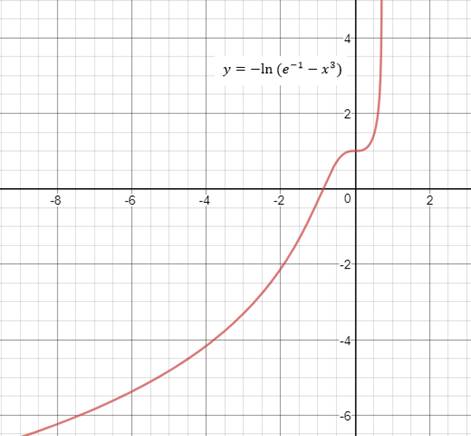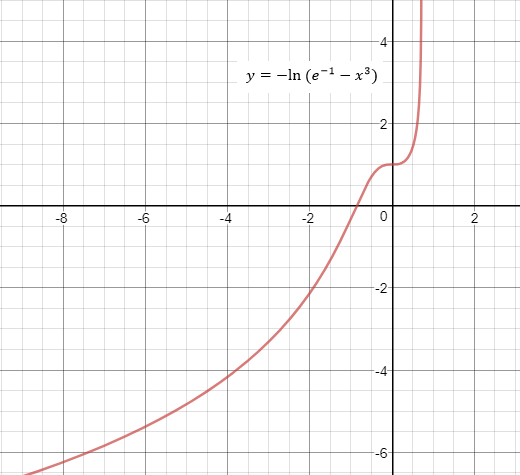
Concept explainers
To solve:
The initial value problem
To Graph:
The solution of the initial value problem
Solution:

|
|
|
|
|
|
1) Concept:
The differential equation
Use separation of variables for
Use initial point to get constant of integration.
2) Given:
The initial value problem
3) Calculation:
Can be rewritten as
By the given concept, this is a variables separable differential equation so
Integrating on both sides
Applying initial conditions,
Therefore,
Applying logarithm on both sides
Now to sketch of solution function, first find the domain.
Since logarithmic function is defined for positive values, we get
So the domain is

Conclusion:
The solution of the initial value problem
And sketch of solution function is given below.

Want to see the full answer?
Check out a sample textbook solution
Chapter 9 Solutions
Calculus (MindTap Course List)
- I need help in ensuring that I explain it propleryy in the simplifest way as possiblearrow_forwardI need help making sure that I explain this part accutartly.arrow_forwardPlease help me with this question as I want to know how can I perform the partial fraction decompostion on this alebgric equation to find the time-domain of y(t)arrow_forward
- Please help me with this question as I want to know how can I perform the partial fraction on this alebgric equation to find the time-domain of y(t)arrow_forwardEvaluate F³ - dr where ♬ = (4z, -4y, x), and C' is given by (t) = (sin(t), t, cos(t)), 0≤t≤ñ .arrow_forwardMid-Term Review Find the formula for (f + g)(x). f(x) = x² - 10x + 25 and g(x) = x² - 10x + 24 (f + g) (x) = [ 2 ]x² X + DELL Skip Sarrow_forward
- Calculus III May I please have some elaborations on Example 2 part a? Thank you.arrow_forward1. A bicyclist is riding their bike along the Chicago Lakefront Trail. The velocity (in feet per second) of the bicyclist is recorded below. Use (a) Simpson's Rule, and (b) the Trapezoidal Rule to estimate the total distance the bicyclist traveled during the 8-second period. t 0 2 4 6 8 V 10 15 12 10 16 2. Find the midpoint rule approximation for (a) n = 4 +5 x²dx using n subintervals. 1° 2 (b) n = 8 36 32 28 36 32 28 24 24 20 20 16 16 12 8- 4 1 2 3 4 5 6 12 8 4 1 2 3 4 5 6arrow_forward= 5 37 A 4 8 0.5 06 9arrow_forward
- Algebra & Trigonometry with Analytic GeometryAlgebraISBN:9781133382119Author:SwokowskiPublisher:Cengage
